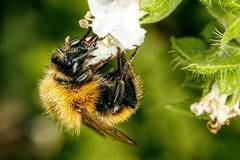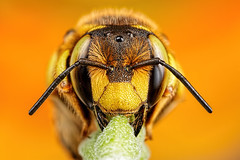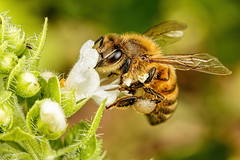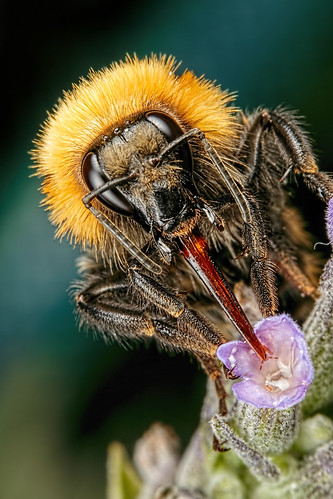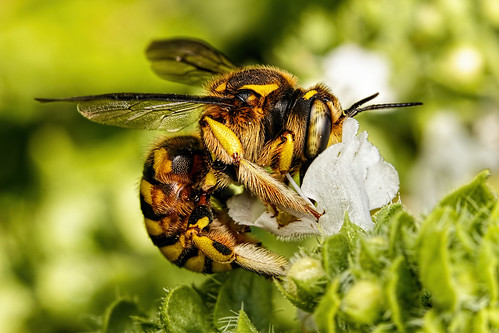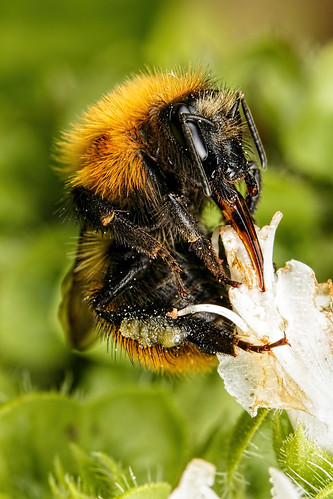
On the hardware side: If you want to keep the background from being black then you pretty much need the sun behind you, and you need to shoot no higher than 2x. As the magnification goes up the amount of available surface area in the background drops, so you'll quickly reach a point where you'll have to set the shutter too slow, ISO too high, and or the Fstop too low. I've found a pretty good balance with my camera set to 1/60, ISO 200, and F11. Then all I have to do is adjust the FEC, usually setting it at about -1. The key is to dial in your camera settings, cast a shadow over and focus on a flower you've baited, and take a shot with the flash off. If you've got some color and detail in the background, and as long as it's not over exposed and the flower is nearly black, then you should be good to go. As long as the flower is horribly under exposed with the flash turned off, then the flash will be the only significant light source on the subject when its turned on. So it's the flash, and not the shutter, that's going to freeze the motion in the scene (just like shooting macro with the flash as the only light source). Set your flash to second curtain sync just in case you do get some motion from the natural light (it will freeze the area in motion right before the shutter closes, giving you detail in that area even though there was movement).
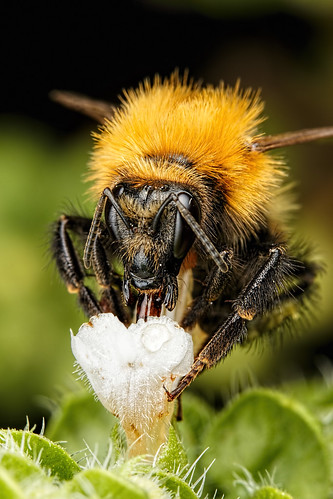
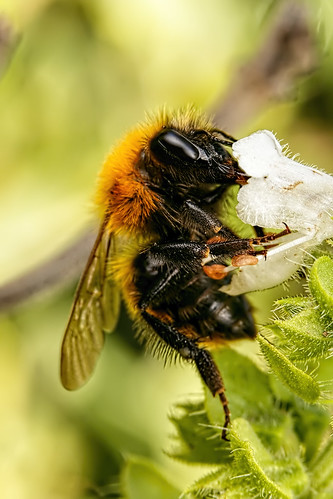
Get happy with the delete key on the keyboard -this is not studio shooting...

